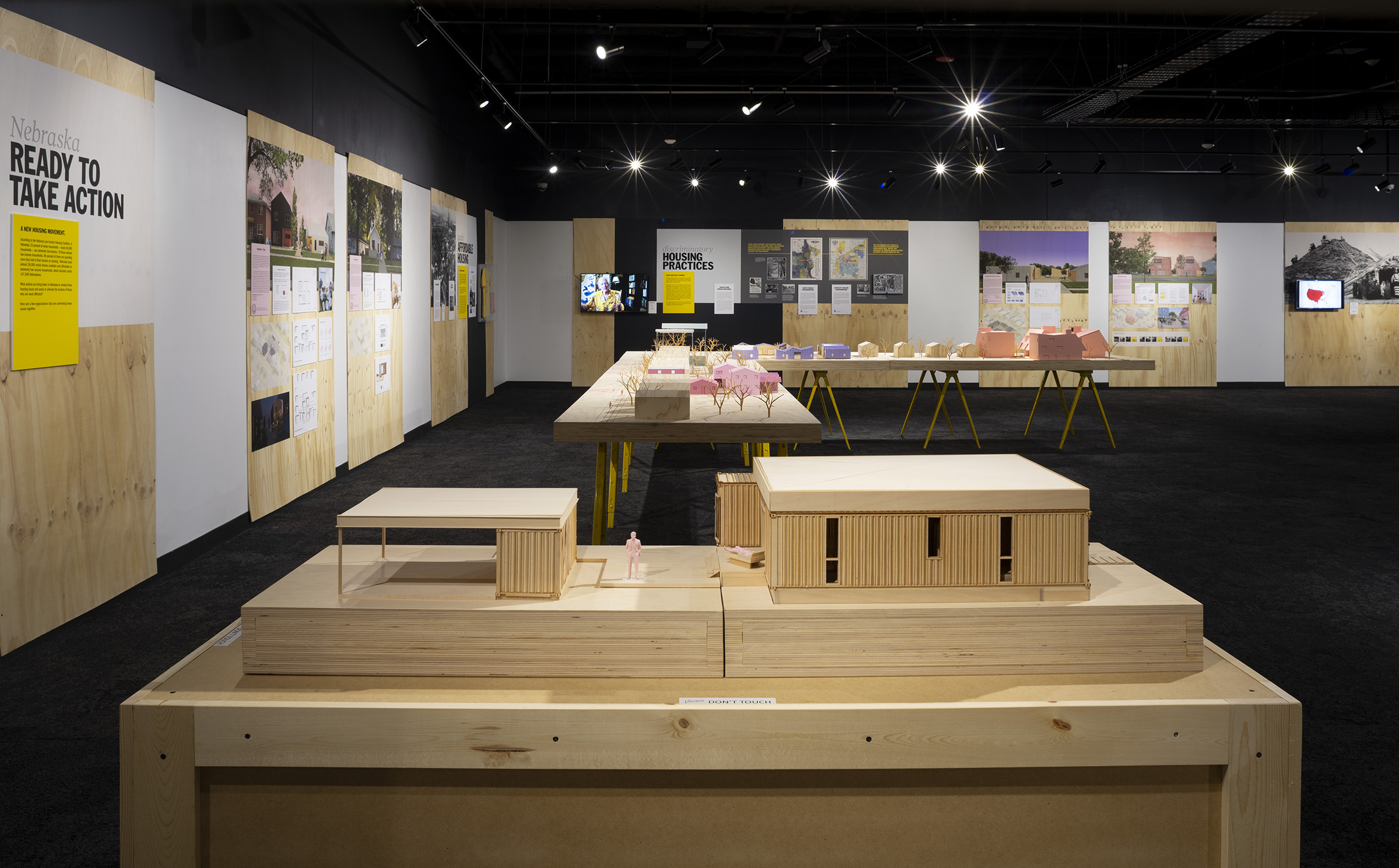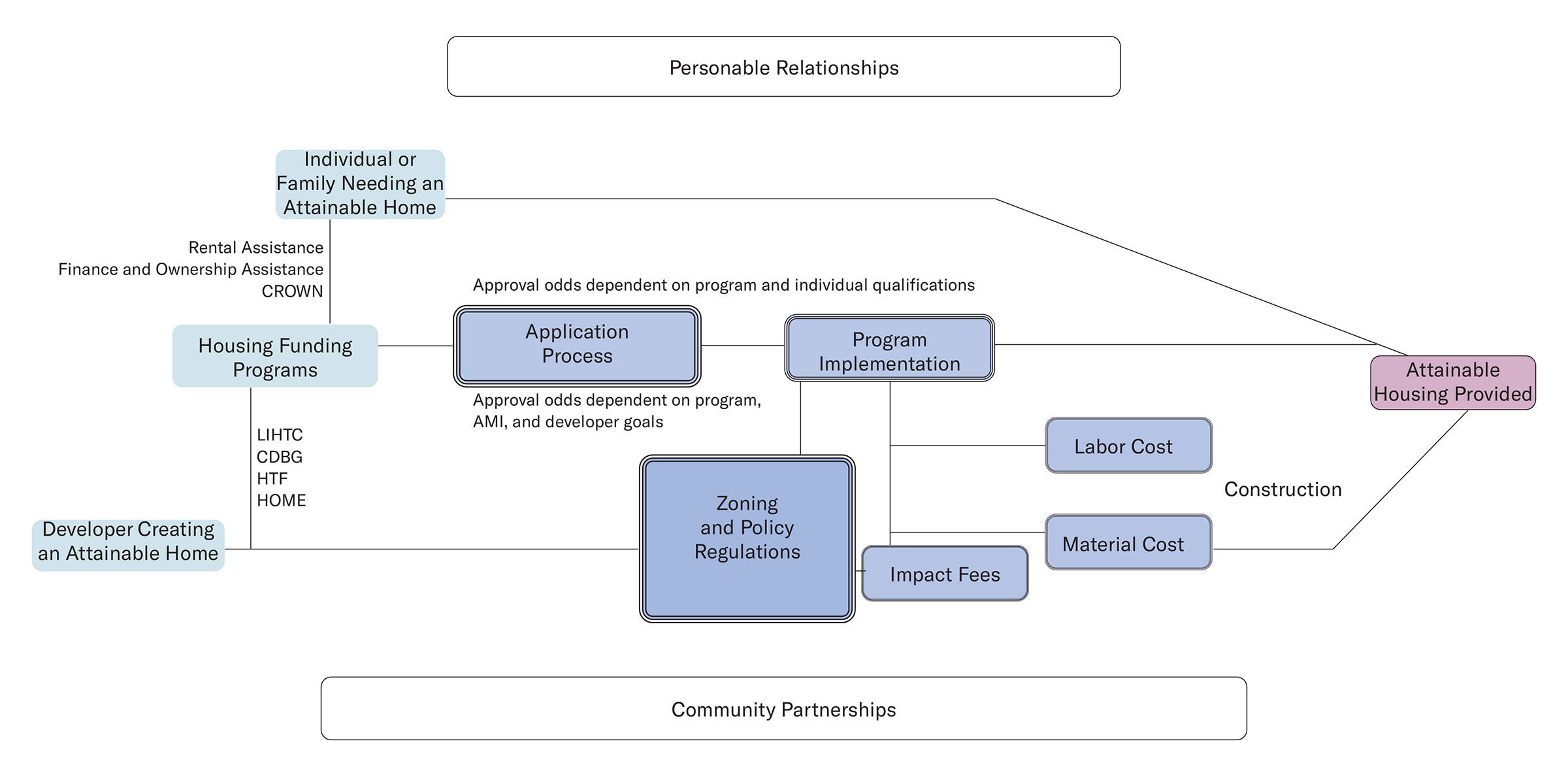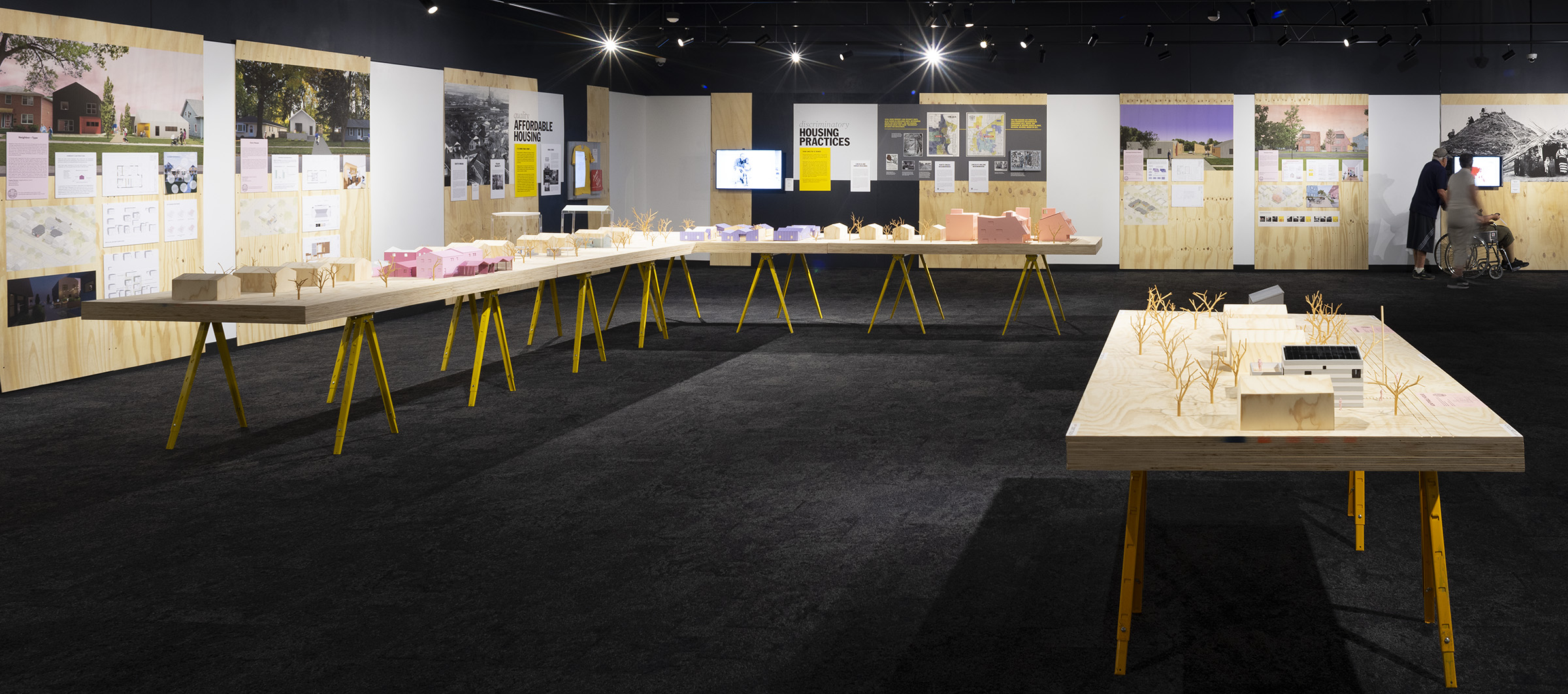
If you believe that everyone has the right to access safe, decent, and affordable housing, then you may recognize we have a serious problem in this country. The issue has reached crisis level in many communities, perhaps not as bad in the state of Nebraska, but we are not immune. The increasing challenges in many cities include cost, availability, location of affordable housing relative to where people work and go to school, decreasing public investment, deterioration of existing rental housing stock, and the persistent legacies of racist housing policies of the 20th Century. Only 30 units of affordable housing are available for every 100 extremely low-income Americans and Federal assistance only serves 25% of those who need it (Nat. Low Income Housing Coalition). At the same time the government has largely abdicated its responsibility to provide basic human needs such as housing (education and health are under similar pressures).
Since 2001 Federal investment in housing support has totaled about $780B (City Lab) while during the same period the government has paid over $5.9T on war (Wall Street Journal). Is this a question of misplaced values? The US Government defines affordable housing as dwelling costs that are less than 30% of family income (this % keeps rising, since 1937 housing act, but has been defined as 30% since 1981). According to HUD, 12M households spend more than 50% on housing yet HUD continues to cut assistance. In the absence of direct public investment solutions range from new financing mechanisms, to strategic changes in zoning and regulation, new and more diverse housing types, to optimizing construction efficiency to lower costs.
The term “affordable housing” is often conflated with subsidized housing – government support for the very needy, but the problem is broader and therefore we find the term “attainable housing” better, but for the purposes of this project we will take affordability in the broadest sense.



Box House One shown with the national traveling exhibition "Evicted", prior to NEw Attainable House


For more information on each house project included in the NEw Attainable House exhibition follow these links:
Hybrid House, Omaha
with inCOMMON Community Development
Adaptable House, Omaha
with Omaha Economic Development Corporation
Common House, Lincoln
with South of Downtown Community Development Organization
Core House, Lincoln
with Habitat For Humanity
Neighbor-Type House, Lincoln
with Neighborworks-Lincoln
Courtyard Common House, Lincoln
with Northern Ponca Housing Authority
The NEw Attainable House project grew out of Box House One, designed by FACT with Neighborworks-Lincoln in 2016 and this earlier project is featured in the exhibition along with those designed in Fall 2020.

The University of Nebraska – Lincoln Community and Regional Planning Program offers a wide range of interdisciplinary studies including a broad scope of community engagement opportunities through design, development, and environmental planning. Partnering with the FACT Master of Architecture Studio and working together with 6 community development agencies provided a new perspective on attainable housing in Nebraska.
Affordable housing is a long-standing theme in Nebraska history. From the efficient design of Native earth lodges, to sod houses and the Homestead Act, Great Depression-era housing programs, racist redlining in cities, the World War II housing crunch in Nebraska airbase and factory towns–a lot of our history involves Nebraskans of modest means finding a place to call their own, and that story continues into the present day. The increasing challenges in both urban and rural communities include cost, availability, location of affordable housing relative to where people work and go to school, decreasing public investment, deterioration of existing rental housing stock, and the persistent legacies of unjust housing policies of the 20th Century. Nationwide, only 30 units of affordable housing are available for every 100 extremely low-income Americans and Federal assistance only serves 25% of those who need it. (Nat. Low Income Housing Coalition) But affordability also impacts those at the middle-income level.
Many obstacles hinder the effective housing of low-income individuals and families. Implementing policy changes at a variety of levels can increase the necessary affordable housing opportunities for families and individuals. These opportunities can break cycles of generational poverty, systemic racism, job insecurity, poor nutrition, and domestic abuse. The need for affordable housing opportunities can be sudden or chronic, fostering the need for a variety of housing types and relationships. Based on extensive review and summarized on this wall, the Planning Studio has drafted several recommendations or considerations to increase affordable housing opportunity in Nebraska.
BARRIERS TO ATTAINING HOUSING
Percent differences between African American or Black and White Households or Individuals in Nebraska. African American or Black households utilize public transportation more than Caucasian or White families, have a greater mobility, and rent more than own their homes. African American or Black individuals have a slightly lower educational attainment. All percentages are calculated with the total population by race. The outer (green) layer is designated as Caucasion/White. The inner (pink) layer is designated as African American or Black.


COUNTIES WITH POSITIVE GROWTH FROM MIGRATION
Net Migration is the difference between outflow and the inflow of population. Lancaster County has the highest net migration, or the most people gained per year. Within Nebraska, Hall County contributes the highest number of people who move to other counties within Nebraska. Analysis of housing tenure has the potential to be correlated with migraton patterns. The African American and Black population in Nebraska has the lowest housing tenure of all demographics in Nebraska and have a much higher percentage of renters than homeowners.

Our policies can be categorized to local level, state level, and federal level. Some policies may be project specific and address barriers that developers face when trying to build affordable housing. Identified below are specific policies that have been rated as having the most importance.
Local Level
I. Implement process for identifying which developers may be eligible for certain incentives, such as waiving permit costs and impact fees for allocating an agreed upon number of below market-rate units
II. Review design standards to meet current micro-living trends to increase density
III. Assess properties that have received aid
IV. Prevent miscommunications during land transactions for properties with detention sites or restrictions
State Level
I. Review Funding Opportunities and Current Spending
II. Create incentives for program success through joining goals in other departments
III. Review other State’s Tenant based rights to ensure quality, safety, and security of rental units
IV. Prevent development interference in low-income neighborhoods by managing development in the interest of current residents
Federal Level
I. Create a clearly stated federal affordable housing policy with specific and impactful outcomes which can be applied to any community in the country
II. Remodel the US Department of Housing and Urban Development website and programs to incorporate easier access to information and applications
III. Update and reorganize the US Department of Housing and Urban Development website and programs to incorporate easier access to information and applications
IV. Identify and address systemic racism and exclusionary housing practices that increase inequality
PERCENT OF OWNER-OCCUPIED HOUSING UNITS BY COUNTY (2018)
Expanding the low-income thresholds to include more people would only overwhelm current programs that have long wait lists for homes or long and tedious application processes. The need for more affordable housing is dramatic and projected to increase.


DISTRIBUTION OF RENTAL ASSISTANCE
Nebraska currently has 53,800 people on rental assistance. 17% of this population consists of seniors, 23% have a disability, and 62% are people who are in families with children. 64% of assisted families are working households. Nebraska has a per capita federal HUD funding of $144.69, as compared to $146.65 in the state of California. The rental assistance programs listed below the map provide the most assistance for Nebraska.

A report produced by the fall 2020 Planning Studio
Affordable Housing is an expansive, multifaceted, and interdisciplinary problem that is currently considered a national crisis. The reasons for underlying causes of this situation are vastly distributed between demographics, location, access to health care, and a variety of other variables. Following the Planning Studio’s examination of the status of attainable housing in the state of Nebraska, several recommendations were formulated. These recommendations vary in scope of specificity, from individual projects to federal administrative government policy.
Reading
Download a list of readings and resources here.
Designing the Nebraska Affordable House, a panel discussion
On April 8, 2020 we assembled a diverse group of panelists with various points of view to help illuminate this topic in an event called Designing the Nebraska Affordable House. The discussion revolved around the design of the affordable home itself as well underlying issues and planning strategies necessary to increase access to housing and to improve housing stock itself. This event was planned in parallel with the exhibition NEw Attainable House at the Nebraska History Museum. Follow this link to a listen to a recording of the panel discussion. Access Passcode: @p%iqW1@

Thank you to all of our Project Partners for their support and dedication to this project!

Recognition
AIA/ACSA Housing Design Education Award, Honorable Mention (NEw Attainable House) 2023
The Journal of Architectural Education, “Review: The NEw Attainable House“, by Shannon Criss, March 11, 2022
Nebraska Quarterly, “Home Sweet Home: Class Designs Affordable Housing for Communities”, by Kerry McCullough-Vondrak, pp. 22-23, Winter, 2021
Nebraska Today, “<ahref=”https://news.unl.edu/newsrooms/today/article/huskers-design-affordable-housing-for-communities/” target=”_blank” rel=”noopener”>Huskers design affordable housing for communities”, April 26, 2021
AIA Nebraska Conference, plenary panelist-presenter, “Nebraska’s Housing Crisis; Ethical Considerations for Affordable Housing”, September 23, 2021
Project Team
FACT Fall 2020 studio:
Professor Jeffrey L. Day, FAIA, Pedro Aguerro, Weston Hanisch, Dana Howerter, Rebecca Kalhorn, Sawyer Kuhl, Quinn McFadden, Nate Meier, Noah Schacher, Jamie Schacher, Emily Tetschner, Josh Weinand, Maddie Whitted
Fall 2020 Planning Studio:
Professor Frank Ordia, Anna Headlee, Vadelynn Ndembet, Megan Patent-Nygren, Roland Schwichtenberg, Mohammed Gibriel
interns and phase 2 students:
Ethan Boerner, Will Cox
consultants and subcontractors:
Actual Architecture Co. (Architect of Record for select houses)
exhibition curator:
Jessica Strube with FACT
project instigator:
Sharon Kennedy
catalog:
Ethan Boerner, Jeffrey L. Day, Dennis Krymuza




